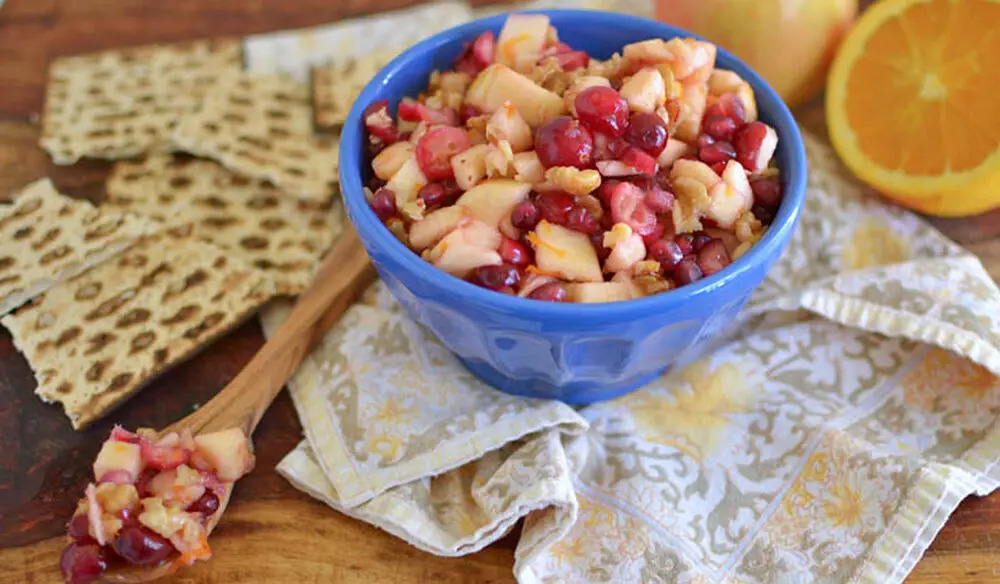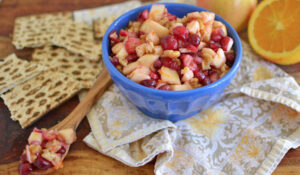Charoset is a staple of the Passover meal for Jewish communities around the world. This sweet, textured dish not only has deep symbolic meaning but also offers a variety of regional flavors, reflecting the diversity of the Jewish diaspora. Here’s a deeper look into what charoset is, its significance, and a classic recipe that you can prepare at home.
The Significance of Charoset
Despite its somber symbolism, charoset is delicious, and recipes vary widely between different Jewish cultures. Ashkenazi Jews often make it with apples, walnuts, and sweet wine, while Sephardic Jews might use dates, figs, and other fruits that are indigenous to the Middle East and Mediterranean.
Ingredients in a Traditional Ashkenazi Charoset Recipe
For those looking to create this meaningful dish, here is a traditional Ashkenazi recipe:
Apples: 3 medium, peeled, cored, and finely diced
Walnuts: 1 cup, finely chopped (be careful if allergies are a concern)
Sweet red wine: 1/4 cup, such as Manischewitz
Honey: 1 tablespoon
Cinnamon: 1 teaspoon
Sugar (optional): 1 tablespoon, depending on your preference for sweetness
Instructions
Prepare the Apples and Walnuts: Start by peeling, coring, and finely dicing the apples. Chop the walnuts finely, but be sure they still have some texture.
Mix Ingredients: In a medium bowl, combine the diced apples and chopped walnuts. Stir in the sweet red wine and honey. Sprinkle cinnamon over the mixture, and add sugar if desired.
Let It Sit: Allow the charoset to sit at room temperature for at least an hour before serving.
This resting period lets the flavors meld together beautifully.
Serve: Serve the charoset on the Seder plate, but it can also be enjoyed throughout Passover as a spread on matzah or as a sweet snack.
Variations and Adaptations
Sephardic Charoset: For a Sephardic version, consider using a mix of dried fruits such as dates, figs, and apricots, combined with almonds or pistachios, and seasoned with spices like cardamom or ginger.
Nut-Free Option: For those with nut allergies, seeds like sunflower or pumpkin can be used as a substitute for walnuts.
Vegan Version: To make vegan charoset, simply ensure that the wine used is certified vegan, as some wines are processed using animal products.
Charoset is more than just a traditional dish; it is a celebration of history, culture, and freedom, wrapped up in a delicious and symbolic recipe. Whether you stick to a traditional method or experiment with regional variations, making charoset can be a deeply personal and rewarding part of preparing for Passover. Enjoy the process and the delicious results!
Exploring the Global Varieties of Charoset
Charoset recipes reflect the geographical and cultural histories of the Jewish communities that make them. Here are some intriguing regional variations that highlight the global diversity of this dish:
Italian Charoset
In Italy, charoset takes a distinctly local flavor, incorporating chestnuts, pine nuts, and even oranges, alongside traditional ingredients like apples and honey. Italian Jews might also add a splash of orange or lemon juice, giving their charoset a unique, citrusy twist that sets it apart from other versions.
Egyptian Charoset
Egyptian Jews often prepare a charoset that is paste-like in consistency and rich in dried fruits like dates and raisins, ground with nuts such as walnuts or almonds. This version might also include sesame seeds, which add a nutty flavor and a bit more texture.
Moroccan Charoset
Moroccan charoset is particularly rich in spices and might include ingredients like cinnamon, clove, and nutmeg. It typically features a variety of dried fruits, including dates, raisins, and apricots, along with almonds and other nuts. This version is often rolled into balls and coated with cinnamon, making it not only a part of the Seder plate but also a treat throughout the holiday.
Indian Charoset
The Bene Israel community in India has a version of charoset called ‘Halek’. It is made from dates and coconut, combined with sugar and spices such as cardamom and nutmeg. This gives it a distinctly Indian flavor that is quite different from the more apple-heavy versions found in the West.
Health Benefits of Charoset
Despite its sweet nature, charoset offers several health benefits due to its ingredients. Apples, nuts, and dried fruits are excellent sources of fiber, vitamins, and antioxidants. Nuts add healthy fats and proteins, making charoset not just a symbolic dish but also a nutritious one. Of course, moderation is key, especially if extra sugar or sweet wine is added.
Making Charoset a Part of Your Tradition
Whether you’re preparing for your first Passover Seder or looking to add a new twist to your traditional recipes, charoset provides a perfect opportunity for creativity. Here are a few tips for making charoset:
Experiment with Textures: Some prefer a chunkier charoset, while others like it smooth and paste-like. Adjust the chopping and mixing to suit your texture preference.
Adjust Sweetness: Depending on your taste and dietary restrictions, you can adjust the amount of honey or sugar. Consider natural sweeteners like agave syrup or maple syrup for a different flavor.
Make Ahead: Charoset tastes even better when the flavors have time to meld. Make it a day ahead and store it in the refrigerator to enhance its taste.
Charoset’s rich tapestry of flavors and textures is matched only by its cultural and historical significance. Each recipe tells the story of a community, of adaptability, and survival, making charoset a deeply meaningful dish on the Passover table. This Passover, take the opportunity to explore the diversity of charoset recipes and perhaps find a new favorite that resonates with your family’s tastes and traditions.




